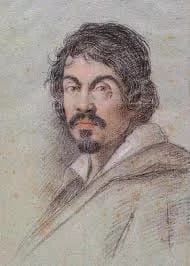
Michelangelo Merisi da Caravaggio didn’t ask permission. He didn’t follow rules. He rewrote them in oil and shadow. A Baroque-era revolutionary with a blade in his belt and fire in his brush, Caravaggio’s life and work were both drenched in drama. He wasn’t painting the idea of heaven—he was dragging heaven down to street level and daring you to look.
Born in 1571, Caravaggio came of age in a world obsessed with perfection, purity, and polished divinity. His answer? Real people. Dirty fingernails. Bruised faces. Saints painted as beggars, sinners as martyrs. He turned biblical scenes into something terrifyingly close to real life. His light wasn’t soft—it was interrogative. Flashlight-in-a-dark-alley kind of light. The technique became known as chiaroscuro—a theatrical play of dark and bright that would echo through centuries of art and film.
But his genius was matched only by his volatility. Caravaggio lived hard, fast, and always on the edge of exile. He brawled. He drank. He was arrested multiple times for carrying weapons, vandalism, and violent assault. In 1606, he killed a man—possibly over a disputed score in a tennis match. Fleeing Rome with a price on his head, he roamed through Naples, Malta, and Sicily, painting masterpieces while dodging death and prison. Some say he was hunted. Some say he was poisoned. What’s certain is this: by 1610, Caravaggio was dead. He was 38.

Despite the scandal—or maybe because of it—his work never stopped speaking. His paintings are operas in oil. Look at The Calling of Saint Matthew—a moment of divine intervention lit like a heist film. Or Judith Beheading Holofernes—not just violence, but psychological warfare captured mid-blade. His figures don’t pose, they act. They think. They doubt. They bleed.
Caravaggio didn’t just influence artists. He rewired them. Without Caravaggio, there’s no Rembrandt. No Gentileschi. No film noir. He showed what happens when you strip away ornament and go straight for the soul.
Today, he belongs in the GAWP:ONE pantheon not just for what he painted—but how. He brought rawness into the sacred. He made emotion the subject. He saw light as confrontation. And he lived like his art—impossible to ignore.
In a world that still sanitises and polishes its public image, Caravaggio reminds us that beauty isn’t always gentle. Sometimes it’s dangerous. Sometimes it swings a sword.



